You paid good money for a quality brisket. You trimmed it and seasoned it carefully. You stayed up half the night tending the coals.* You patiently rested the brisket and sliced it for every person at the cookout individually. Everyone loved it. You loved it! But somehow…somehow there are…leftovers?
With all the work and care that goes into BBQ, the last thing you want to do is ruin your smoked meats by drying them out when warming them up. Can’t we have supple tender, juicy leftover BBQ? Must it be dry and disappointing—flavorless, even?
Yes we can! And no, it needn’t! Here we’ll look at our favorite way to reheat BBQ so that it is (almost) as good as it was fresh off the smoker. No surprise here—temperature is the secret.
*That’s on you though. You should have gotten a Billows and a Smoke X™ to tend the fire for you!
Proper reheating of all leftovers
First, we should say that all leftovers should be heated to an internal temperature of 165°F (74°C) for food safety. Not only will cooking leftovers to 165°F (74°C) kill all the bacteria on your food, but it will also destroy most of the toxins that were produced by bacteria that were introduced to your food as it sat out. Unless you held your cookout in a hospital clean room and thoroughly cleaned all your guests before they entered, chances are pretty good that some Staph bacteria (not to mention other bugs) landed on your food. E. Coli and Salmonella hurt us by living inside of us, but some bacteria, like staph, actually secrete poisons that sit on our foods. They can be long dead and their poisons will remain unless they, too, are destroyed. So, we know we need to reheat our leftovers up to 165°F (74°C).
Use a water bath
We should probably say this at the outset: reheating BBQ in the microwave is about the worst approach to leftovers. You know it will come out tough, overcooked, and dry.
Reheating it in the oven, in stead, can work, but to keep it from drying out, you really need to reheat it at a very low temperature, and—air being the bad conductor of heat that it is—that takes a long time. The best way to reheat BBQ is in water, and I don’t mean simmering it or boiling it! To reheat BBQ the very best, you should really sous vide it.
Sous vide? So I need a circulator and vacuum sealer just to warm up my brisket? No! While sous vide circulators are super accurate (and really quite fun), you can achieve results that, in this application, are almost indistinguishable by using a pot, a stove, and some zip-top bags along with your ChefAlarm® or Smoke®. Do it right, and you’ll end up with amazing results and no additional gear cost.
Key points for reheating BBQ without a sous vide circulator:
To demonstrate how easily this can be done, we used some frozen brisket that we had saved. (Remember those amazing brisket nachos that only used a flat? Time to pull that point out of the freezer!) We pulled it straight from frozen and reheated it in an improvised sous-vide bath. You don’t have to start with frozen meat for this technique, but you can do it from frozen, which is great. Whatever BBQ meat you use, these are the steps you should follow for the reheating process:
- Use a pot that is large enough to comfortably hold your leftovers with a lot of water (more water = a larger heat reservoir).
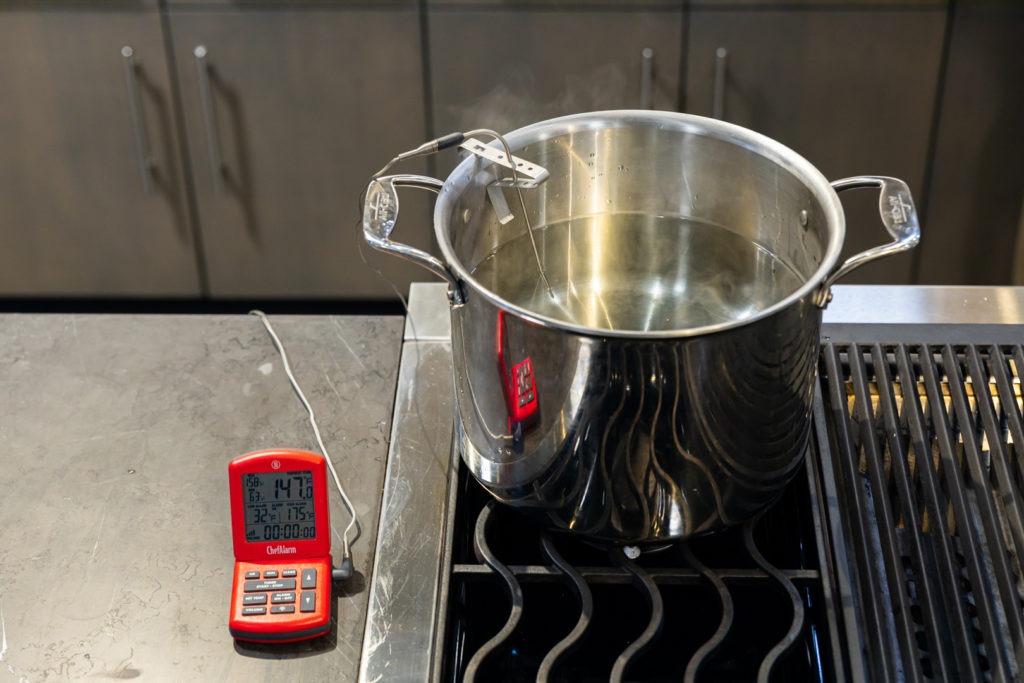
- Use a zip-top bag if you don’t have a vacuum sealer. You’ll still need to get as much air out as possible, and that’s best done by mostly submerging the bag with the food in it, letting the water around the bag push the air out, and then sealing the top. (Zip-top bags are foodsafe at the temperatures we’re discussing here.)
- Use a leave-in probe thermometer clipped to the side of the pot to keep track of the water bath temperature. To get up to the requisite 165°F (74°C) you’ll need the water temp to be higher—175°F (79°C) works. Set the high-temp alarm on your ChefAlarm for 175°F (79°C) and adjust the heat on your stove to keep it as close to that temperature as you can.
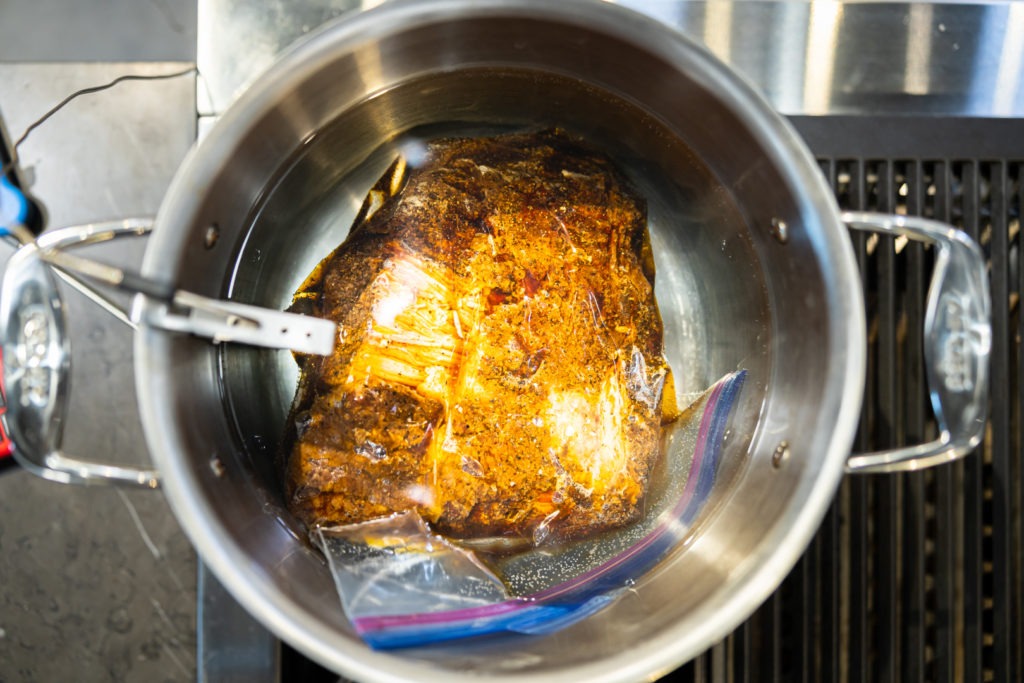
- Check the temp of your meat occasionally by opening up the zip-top bag and using a Thermapen®. This is actually an advantage over using a vacuum-sealed bag—you can temp the meat more easily this way.
- Or, if you have a Smoke thermometer, you can monitor the temperature constantly with the second channel and your other probe.
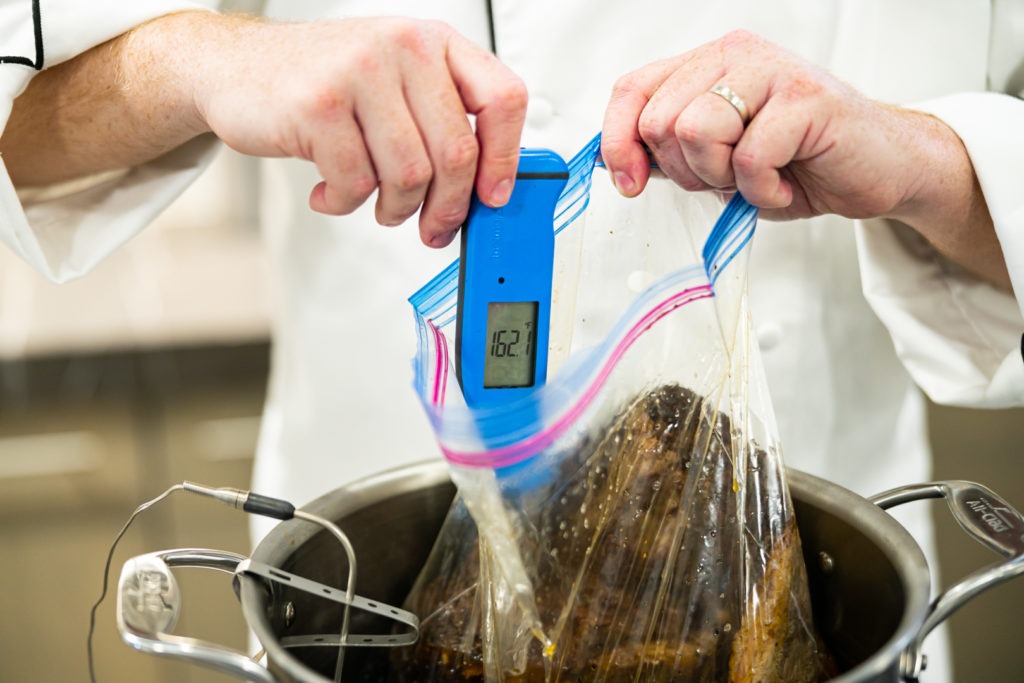
- When the meat reaches 165°F (74°C) internally, remove the bag from the pot and the meat from the bag and slice up and serve your delicious BBQ!
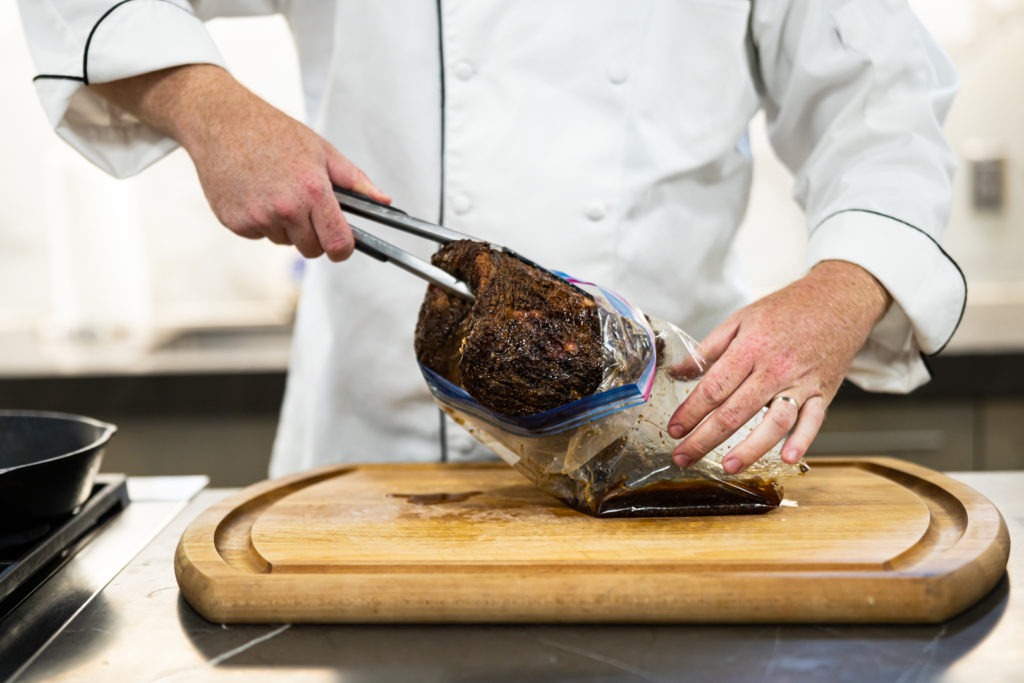
Yes, you will lose some juice to the bag, but you can easily pour it back onto the sliced meat, it won’t have evaporated and lost to the oven. Our brisket shed about 3/4 cup of juice, but even without pouring it back over the slices, you’d never have known. It was tender and succulent and way better than if we had used the microwave to reheat it! Look at how the brisket bent after cooking:
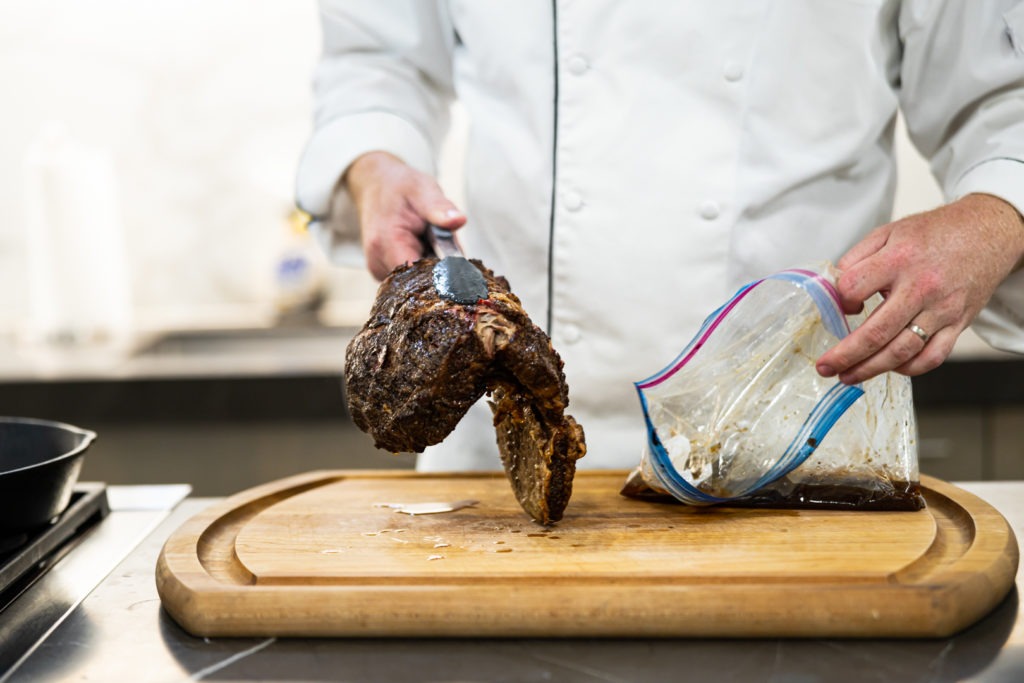
Employing this method of reheating BBQ will give you superior, juicy results every time. Get the best out of your BBQ leftovers with a ChefAlarm and a pot.
Simple, excellent, easy, and delicious!
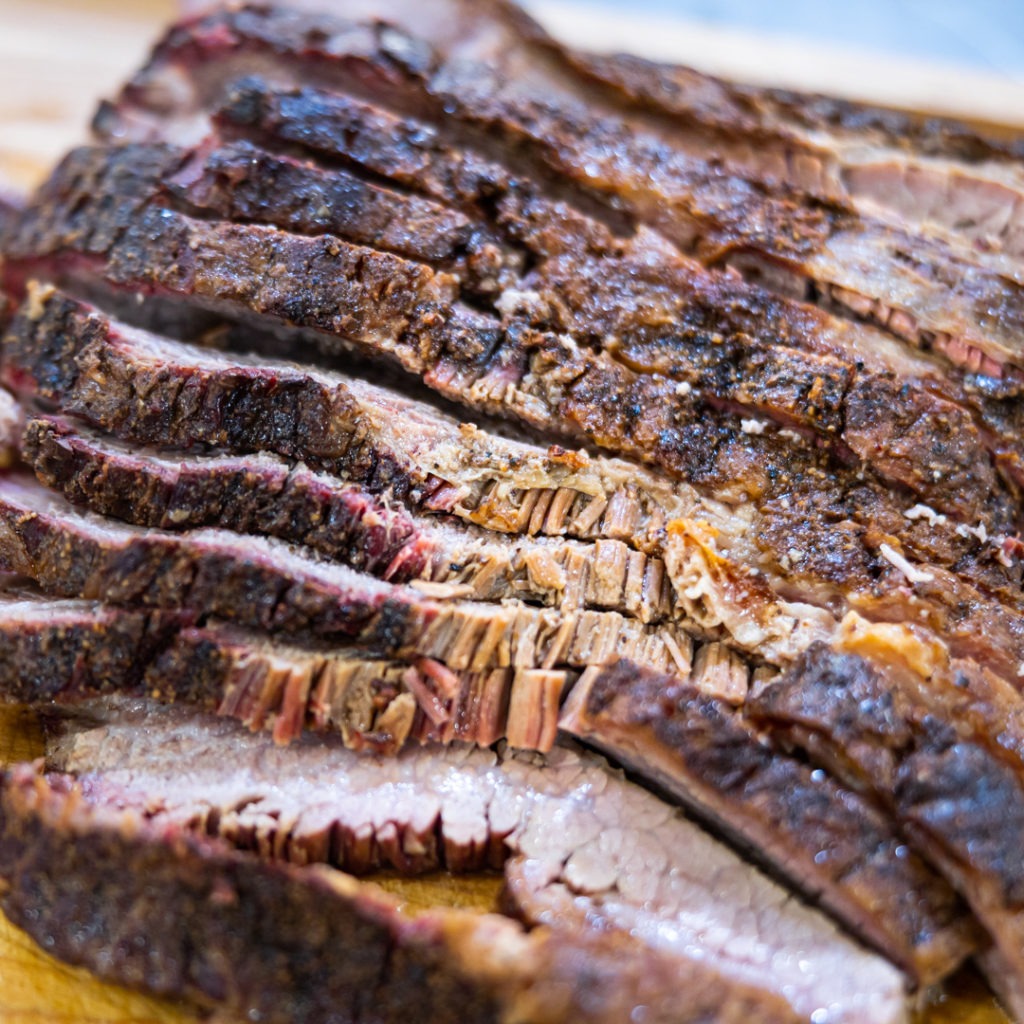
Shop now for products used in this post:
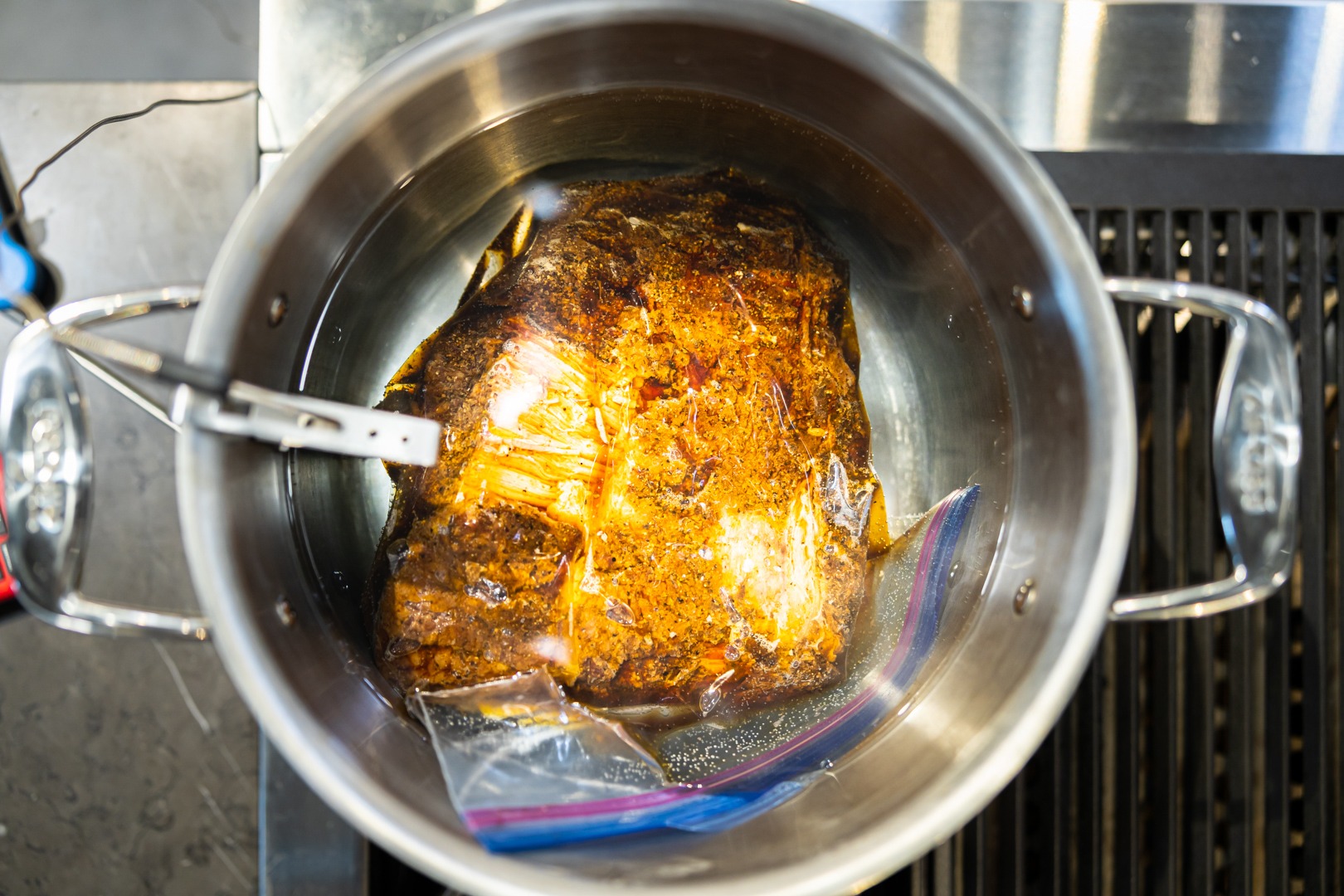
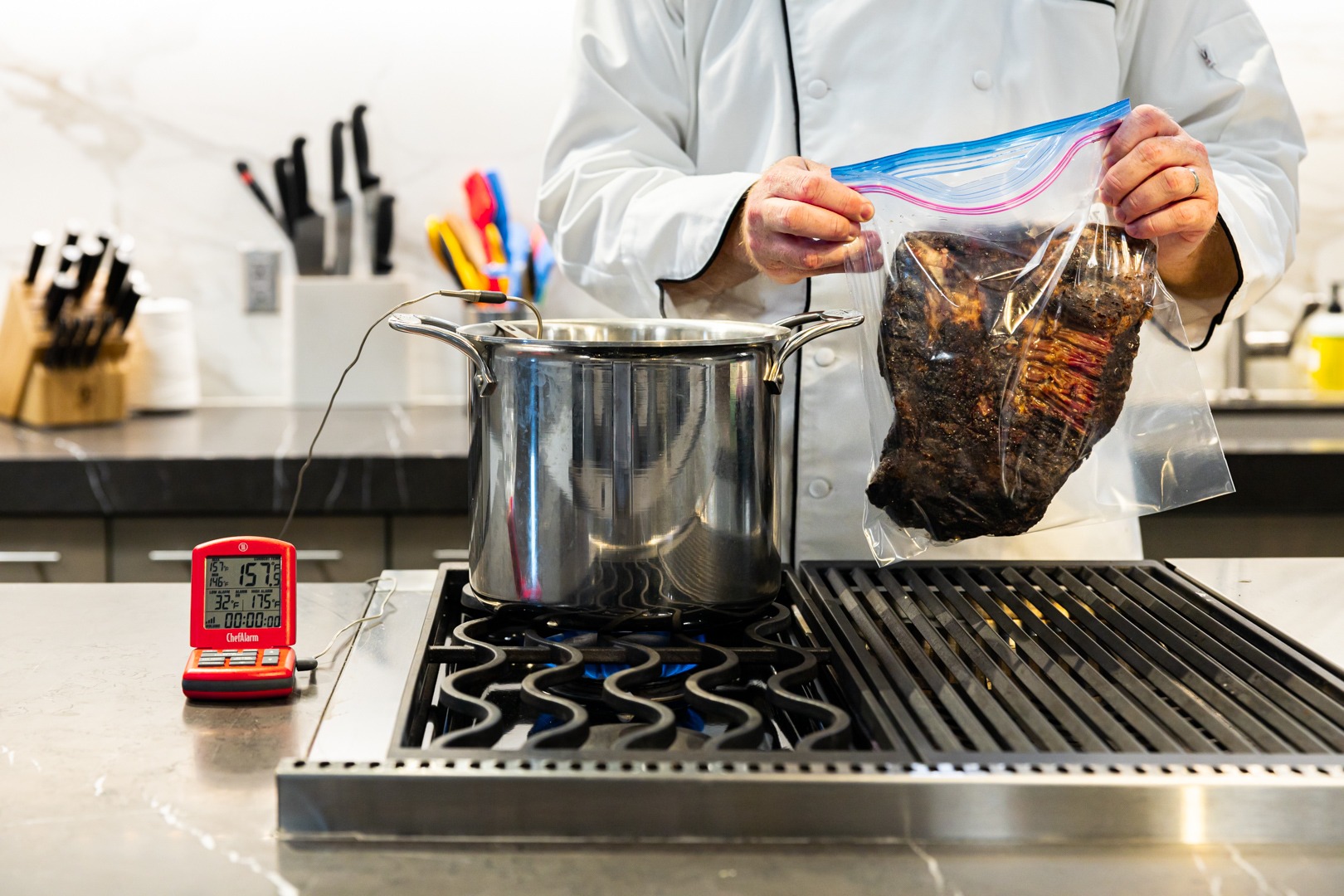
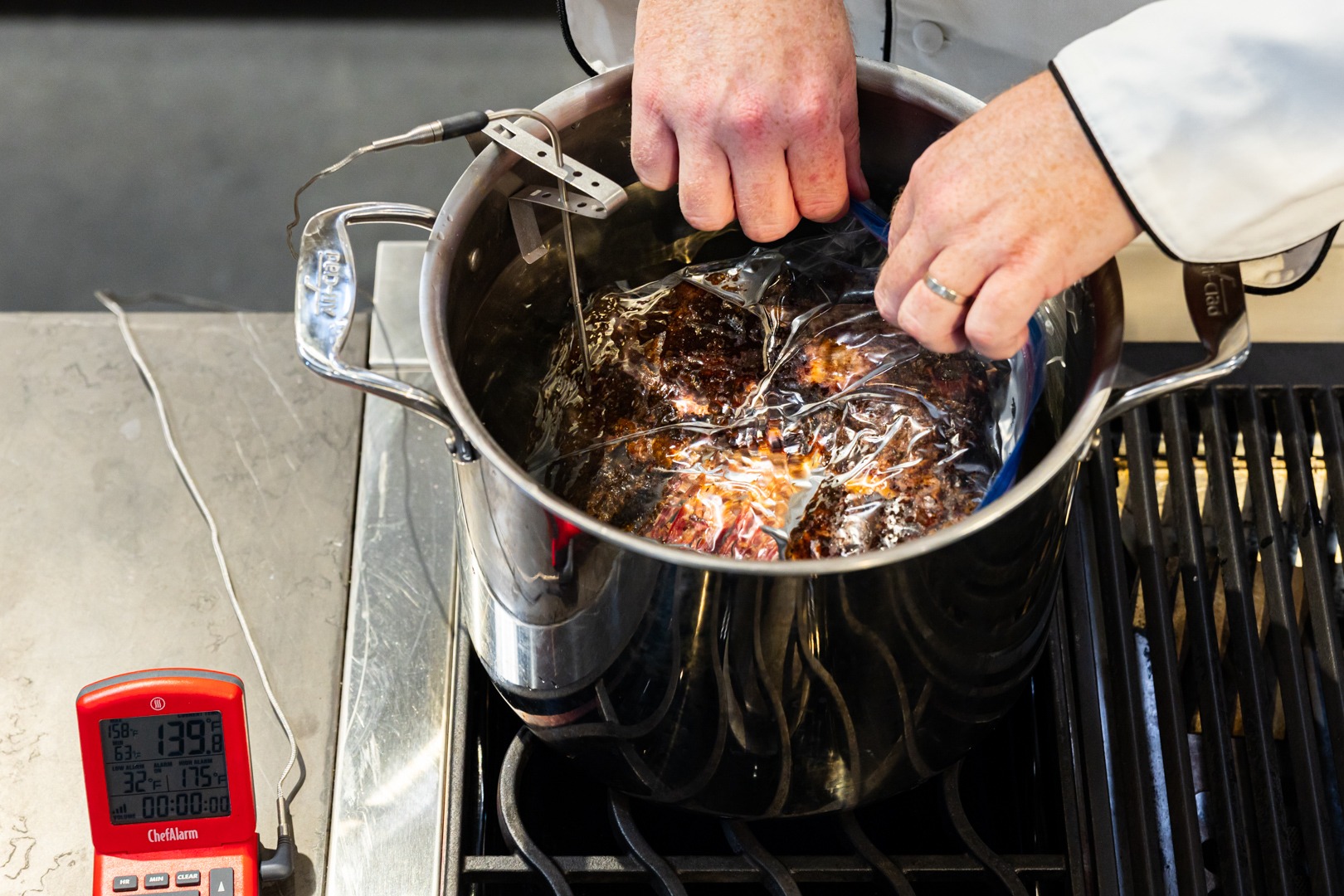

Paul Wilant says
Can I smoke a precooked boneless pork roast? My neighbor wants me to try.
Martin says
Not really, no. Smoke absorption happens best while meat is raw, so smoking a cooked roast will not be very effective. YOu will get a little smokiness on the outside, but not much.
Gregory J Herdemian says
I’m a little confused. If you sous vide at 165 degrees, why wouldn’t the meat eventually get to that temperature? If I’m cooking sous vide doesn’t the temperature of the food get to the temperature of the water bath?
Martin says
Technically, you could reheat at your target temperature, but it will take much, much longer to get there. As the gap between the ambient temperature and the food temperature narrows, the rate of temperature change slows. Closing the gap in those last few degrees takes way too long. Since we’re talking about destroying toxins here, not just killing bacteria, reaching the actual temperature is key. By increasing the water bath temp by 5 or 10 degrees above your target, you get to where you’re going without hanging out in the water bath for too long.
Gery says
I understand as many variables but in your case how long does it take to get to meet up to 165 and a bath water of 175
Martin says
In the case of our frozen brisket point, it took about 2-1/2 hours. Non-frozen food will take much less time.
Ken A. says
This article seems counter intuitive. For example, I originally cook some rib eyes via sous vide at 132 degrees and I end up with leftovers. You’re saying that when I reheat those leftovers, I now have to heat it to 165 degrees? They weren’t even cooked to that temperature in the first place (not to mention they are now going to be “well done”) and my instincts tell me that there is a greater possibility of less “bugs” on the reheating vs the original raw. I understand with a brisket that was originally brought to 200 degrees, its no big deal to reheat to 165 but a lot of other food is cooked below 165 degrees.
Martin says
Ken,
You raise a point that is interesting and fair. I hope I can address it well enough. I’ll use Staph as the type bacteria for what we’re trying to protect against in this case, but there are other bacteria that can cause the same problems.
The reason we worry about leftovers is the fact that they usually sat out for some time before being put away, and usually in the presence of people. If food is cooked, served, and promptly stored in proper temperature conditions, the chances of Staph multiplying on the food are very low. But if you had an outdoor cookout and the brisket sat there for a while, it’s much riskier.
Really, we’re worried about bugs that are added to the food after cooking. These toxin-producing bacteria are also more likely to get into food if the food or the serving utensils have been handled by more people. So if only you touched your steak and no one else’s hands touched the utensils you used, then, again, it’s probably very safe, assuming you don’t have staph on your skin. (This is also why employees MUST wash their hands before working with meat at butcher shops, grocery stores, etc.—to keep their staph off of things)
But here’s the kicker. A lot of food safety best practices are based on the protection of the weakest: the elderly, the young, the immunocompromised. The food codes are written so that nearly anyone should be able to eat any food produced by following them. Is it sometimes overkill? Maybe. Do I want to be the one that sends Grandma to her death because she ate my BBQ taco salad? No sir! It would be irresponsible of me when writing this blog to endanger those whose lives and health depend on proper food care, so I try to stick to the food code. If you want your leftover ribeye to stay medium rare—as I would!—then there is another level of risk that you choose to accept. If that risk/reward payout looks good for you, then by all means cook it how you see fit. If we were to make all foods 100% safe all the time it would be a pretty boring life, but the choice on how much risk should be taken is based on an informed decision.
I hope that helps. Happy cooking!
Winters says
Excellent reply! Staph and it’s nasty little cousins are nothing to be trifled with. Those guys kill and maim for a living. Stay safe and heat all leftovers to that magic 165 degrees mark and toss that potato salad and other mayonnaise based salads in the trash if they are allowed to get above 60 degrees for any length of time.
My favorite way to utilize leftover ribeyes is to slice them very thin, sauté them in butter with onion and garlic to that 165, top with shredded sharp cheddar and pico d’gallo, toss on a flour tortilla and enjoy!
torres says
I found this blog so amazing. So much information, and it’s all so well organized. . This is going to be a valuable resource for me. Thank you so much for creating it!